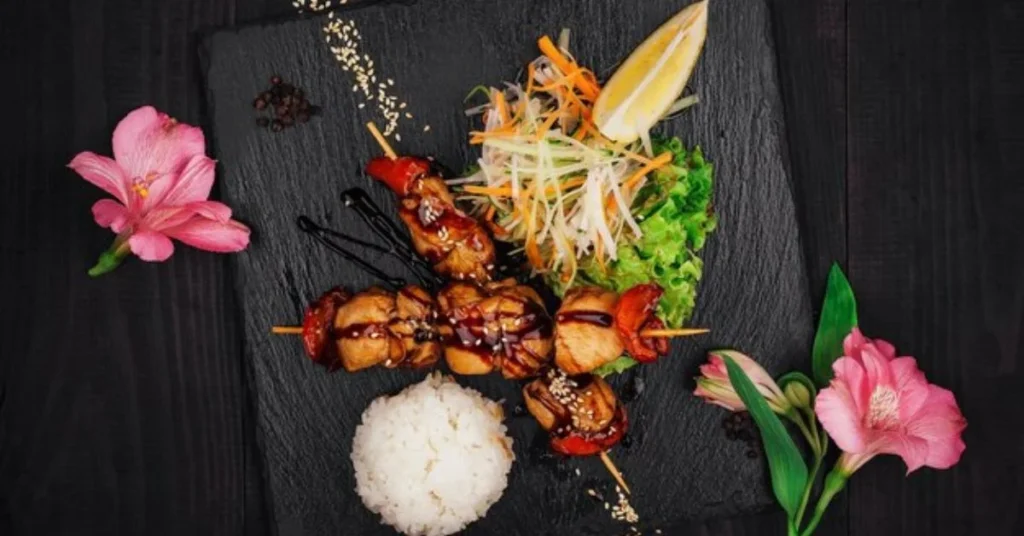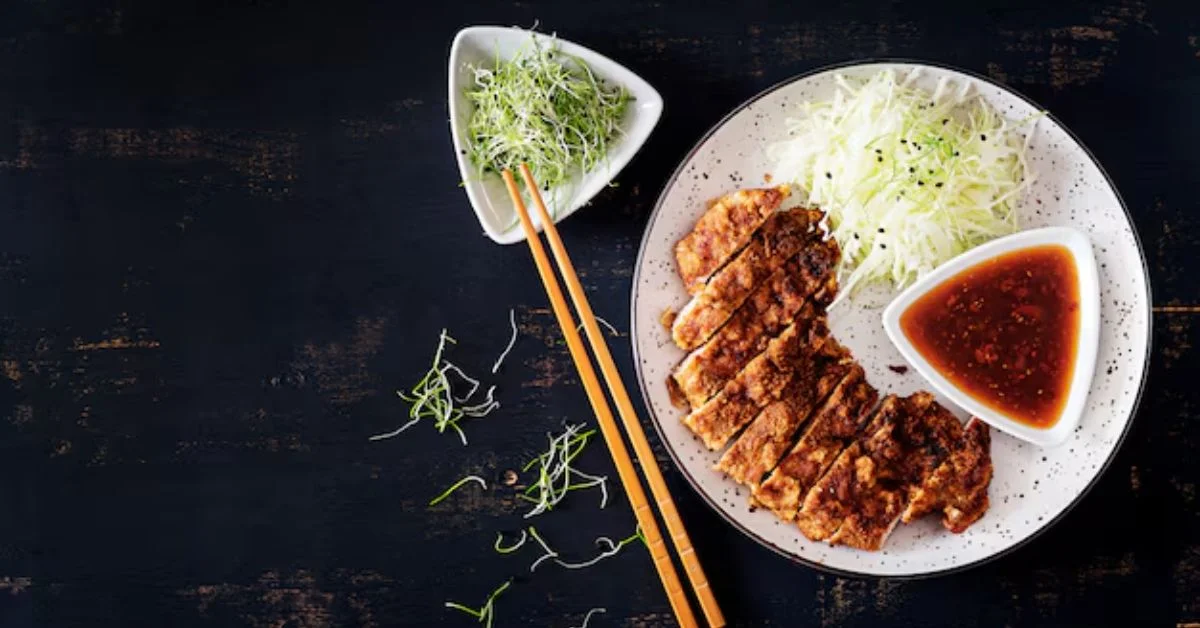Introduce Ichi Teriyaki as both a tribute to traditional Japanese cooking and a modern culinary experience. Describe the origins of teriyaki, tracing its journey from Japan to becoming a popular choice worldwide. Teriyaki sauce, known for its glossy, savory-sweet profile, has found a place in many global cuisines, from Japanese restaurants to fusion-style dishes in the West. Ichi Teriyaki could represent a brand that balances traditional teriyaki flavors with creative, healthier options, drawing customers with both authenticity and quality.
1. Understanding Teriyaki Cuisine
Teriyaki is a traditional Japanese cooking technique where food is coated with a sweet soy-based glaze and then grilled, broiled, or pan-fried. The term “teriyaki” is derived from “teri” (which means shine or luster) and “yaki” (meaning to grill or broil), highlighting a method that is both visually striking and full of flavor. This cooking style originated during Japan’s Edo period in the 17th century, when chefs used locally produced soy sauce and mirin to enhance the taste of fish dishes.
The technique spread globally, becoming a hallmark of Japanese restaurants in the U.S., Europe, and beyond. While traditional Japanese teriyaki uses fish like yellowtail, some variations from Ichi Teriyaki might adapt the style to meats like chicken, beef, and pork, catering to broader preferences. This versatility has been key to teriyaki’s global appeal, with Ichi Teriyaki likely offering variations to satisfy both purists and modern palates.
2. The Ingredients of Teriyaki Sauce
At its core, teriyaki sauce is a delicate blend of soy sauce, mirin (a type of sweet rice wine), and sugar, creating a rich, glossy glaze. Some variations include sake for added depth, ginger for zest, or garlic for extra boldness. The balance of these ingredients is essential, as it creates a unique flavor profile—one that’s sweet, tangy, and salty all at once.
Ichi Teriyaki might prioritize the highest-quality ingredients, like naturally brewed soy sauce, to intensify flavor without artificial additives. The sweetness in the sauce typically comes from sugar or honey, caramelizing during cooking to create a beautiful, shiny glaze. This caramelization enhances both the appearance and taste, giving teriyaki its signature look and flavor.
The sauce’s versatility allows it to complement a wide range of foods. At Ichi Teriyaki, diners might find this sauce paired not only with meats but also with tofu, vegetables, and rice bowls, making it suitable for different dietary preferences.
3. Cooking Methods at Ichi Teriyaki
At Ichi Teriyaki, the process of cooking with teriyaki sauce might be as significant as the sauce itself. Cooking methods include grilling, broiling, and pan-frying, with each style imparting a unique flavor and texture. By grilling, the food retains a smoky undertone, while pan-frying gives a richer, caramelized crust due to direct heat contact.
A key part of teriyaki cooking is glazing the food repeatedly with sauce during cooking. This layering technique allows each coat to caramelize and become part of the dish, resulting in a perfectly balanced flavor. At Ichi Teriyaki, chefs might use a variety of techniques to achieve this effect, creating a multi-dimensional taste that resonates with every bite.
For modern adaptations, Ichi Teriyaki could explore innovative cooking methods such as air-frying for a lighter dish or sous-vide to retain maximum flavor and tenderness. These methods could offer a healthier approach to traditional teriyaki without compromising the iconic taste.

4. Nutritional Aspects of Teriyaki
Teriyaki dishes can be nutritious when made with quality ingredients, but some aspects of traditional teriyaki sauce raise health considerations. Common ingredients, such as soy sauce, are naturally high in sodium, which can lead to health risks like hypertension if consumed frequently. High sodium intake is particularly a concern in commercial teriyaki sauces, where sodium levels are often elevated for extended shelf life and enhanced flavor.
Likewise, the sugar content in many sauces poses potential health concerns, as sugar is associated with weight gain, increased diabetes risk, and tooth decay when eaten in excess. At Ichi Teriyaki, healthier modifications might be available, such as low-sodium soy sauce or sugar substitutes like stevia or honey, offering a lower-glycemic alternative.
A section of the menu could even feature “light” options, such as grilled tofu or vegetables with a reduced-sugar sauce, catering to health-conscious diners without compromising the essence of teriyaki. Nutrition-conscious diners may appreciate the option to customize their meals at Ichi Teriyaki, potentially allowing them to request additional vegetables, whole grains, or lean proteins.
5. Popular Ichi Teriyaki Dishes
At Ichi Teriyaki, a variety of signature teriyaki dishes likely takes center stage. Below are some popular options they might offer:
- Teriyaki Chicken: A classic favorite, chicken teriyaki combines succulent grilled chicken with the rich, sweet teriyaki glaze. Chicken teriyaki is often served over rice and accompanied by sautéed vegetables, balancing flavor and nutrition.
- Beef Teriyaki: Beef teriyaki uses tender cuts of beef, marinated and grilled to perfection. Known for its bolder, richer flavor, beef teriyaki pairs well with slightly thicker sauces that adhere to the meat.
- Tofu Teriyaki: A vegetarian-friendly option, tofu teriyaki is made by grilling or pan-frying tofu cubes and glazing them with teriyaki sauce. This dish offers a lighter, plant-based alternative without sacrificing the distinctive teriyaki flavor.
- Teriyaki Salmon: In line with traditional Japanese cuisine, teriyaki salmon is a popular fish option. The fish’s natural oils complement the sauce, creating a balanced and flavorful dish.
These options likely appeal to a diverse range of customers, with Ichi Teriyaki offering side dishes and appetizers to enhance the meal, such as miso soup, seaweed salad, or tempura vegetables.
6. Teriyaki in Global Cuisine
Teriyaki has grown beyond its Japanese origins, inspiring fusion dishes worldwide. In Western cuisine, teriyaki sauce is often found on burgers, wraps, and even pizzas, blending traditional flavors with innovative twists. Ichi Teriyaki may embrace this global influence by incorporating fusion items on its menu, like teriyaki chicken sliders or sushi rolls with teriyaki-glazed ingredients.
Beyond meat dishes, teriyaki has also inspired vegan and vegetarian dishes, adding a tangy, rich profile to grilled vegetables, tempeh, and plant-based proteins. Ichi Teriyaki could cater to these preferences by offering unique teriyaki-inspired vegan dishes, allowing customers to enjoy the iconic flavor without animal products.
Moreover, teriyaki’s popularity has also inspired convenience foods, like teriyaki-flavored snacks and pre-made sauces. However, Ichi Teriyaki might emphasize the fresh, handcrafted quality of its teriyaki sauce, setting it apart from store-bought varieties that can lack depth and authenticity.
Conclusion
Teriyaki remains a beloved global cuisine, celebrated for its versatility and bold flavors. Ichi Teriyaki brings this classic Japanese cooking method to a diverse audience, honoring tradition while embracing innovation. By offering a range of options from traditional dishes to health-conscious and fusion items, Ichi Teriyaki appeals to customers seeking both authenticity and variety.
Whether enjoyed as a casual meal or a culinary experience, teriyaki has a universal appeal that continues to captivate taste buds worldwide. With its careful preparation, quality ingredients, and dedication to flavor, Ichi Teriyaki stands out as a destination for teriyaki enthusiasts and newcomers alike.
FAQs
What does “teriyaki” mean?
Teriyaki is a Japanese term meaning “glossy broil.” It refers to a cooking method where food is glazed with a sweet and savory sauce while being grilled, broiled, or pan-fried.
Is teriyaki sauce high in sodium?
Yes, traditional teriyaki sauce can be high in sodium, which may lead to hypertension if consumed frequently. However, many restaurants, including Ichi Teriyaki, offer lower-sodium options.
Can Ichi Teriyaki dishes fit into a healthy diet?
Yes, by choosing options with reduced sugar and sodium or adding vegetables, teriyaki dishes can be part of a balanced diet. Customizable options at Ichi Teriyaki can help diners make healthier choices.
What gives teriyaki sauce its unique flavor?
Teriyaki sauce has a complex flavor that combines sweet, salty, and tangy notes, typically derived from soy sauce, mirin, and sugar. This balance creates a deliciously glossy glaze on various proteins and vegetables.
Does Ichi Teriyaki offer vegetarian options?
Yes, many teriyaki restaurants, including Ichi Teriyaki, offer vegetarian dishes like teriyaki tofu or grilled vegetable bowls, catering to plant-based preferences.








